In the Studio: Bethany Grabert
"I'm expressing what it feels like to have an chronic pain disorder…I want my vi...

Scott Anderson is a painter based in Albuquerque, New Mexico, and a 2024 Joan Mitchell Fellow. We interviewed Anderson about his work and creative practice in February 2025.
To make art, for me, is to think, process, and emote in a concrete way. It’s a way of populating my surroundings with objects that indicate how I feel about or how I'm understanding the visual world.
I make paintings, mostly, and less frequently other things that pass through that discipline. The paintings are grounded in something that probably most paintings are at some level, which is a kind of questioning of assumptions about the relationship between representation and materiality. I don't really think of the work in terms of a continuum, as in how one thing I make relates to another thing I make, but obviously they do. Over the past few years there seems to be this kind of anthropomorphising of otherwise non-figurative forms that then get partially undone again, like failed golems.
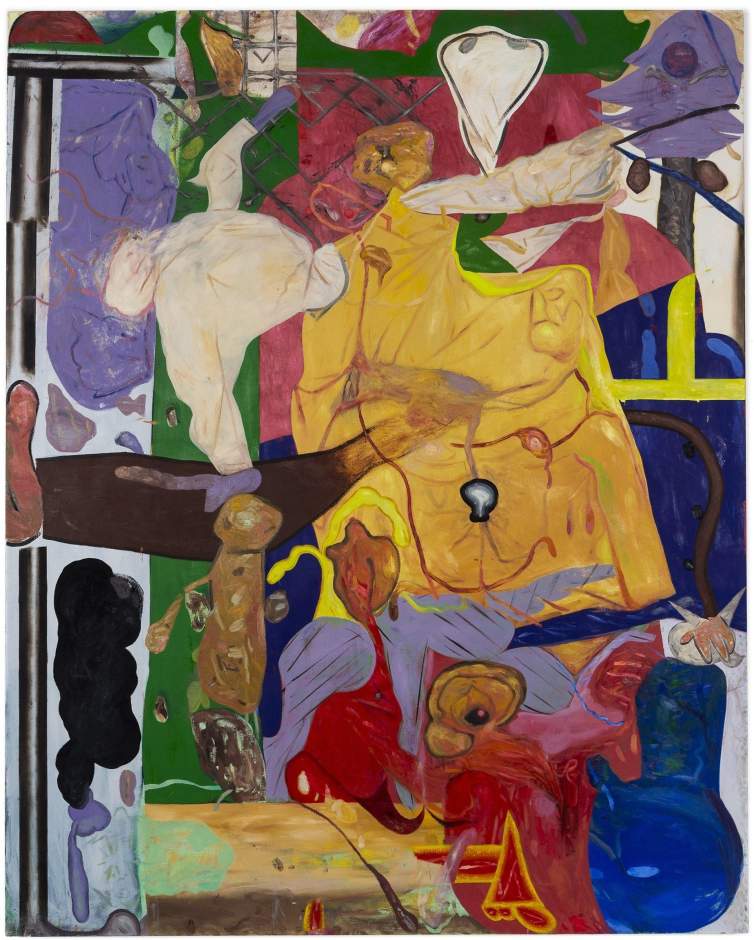
I rent a studio that is about a 20 minute drive from my house. It's a small stand-alone structure in a cluster of commercial properties that was the studio of a local art-restorer for over two decades before I took it over last spring upon his retirement. It has great vibes and the landlord is super supportive of its use as an artist's studio, so I feel very lucky in that regard.
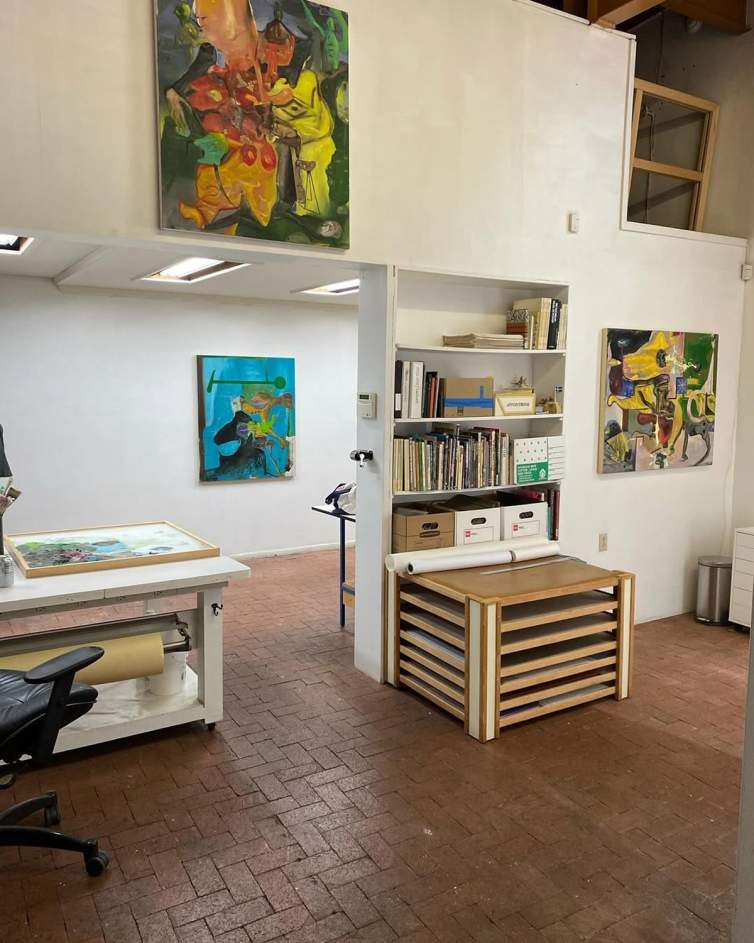
To start a piece, I typically need some kind of readymade—something to respond to. My paintings are usually derived from drawings that I make, but really what I end up deciding is a finished painting comes from failed paintings and false-starts below the surface. This might be a cliché, but they are palimpsests in that way. Painting is an act that marks how it feels for me to be making something in the world at a given moment.
I'll start a painting with a fairly 1:1 translation of a drawing that gets puffed up, then maybe wiped out or reoriented or whatever. This happens over and over, sometimes for months. There is a lot of change over time, though it's never deliberate or contrived. I'd love to be able to finish a painting in one go, and I'd be fine with how that one would be different from the others, but over the past several years anyway, the slow-cook to the over-baked seems to have become a fixture of my working process.
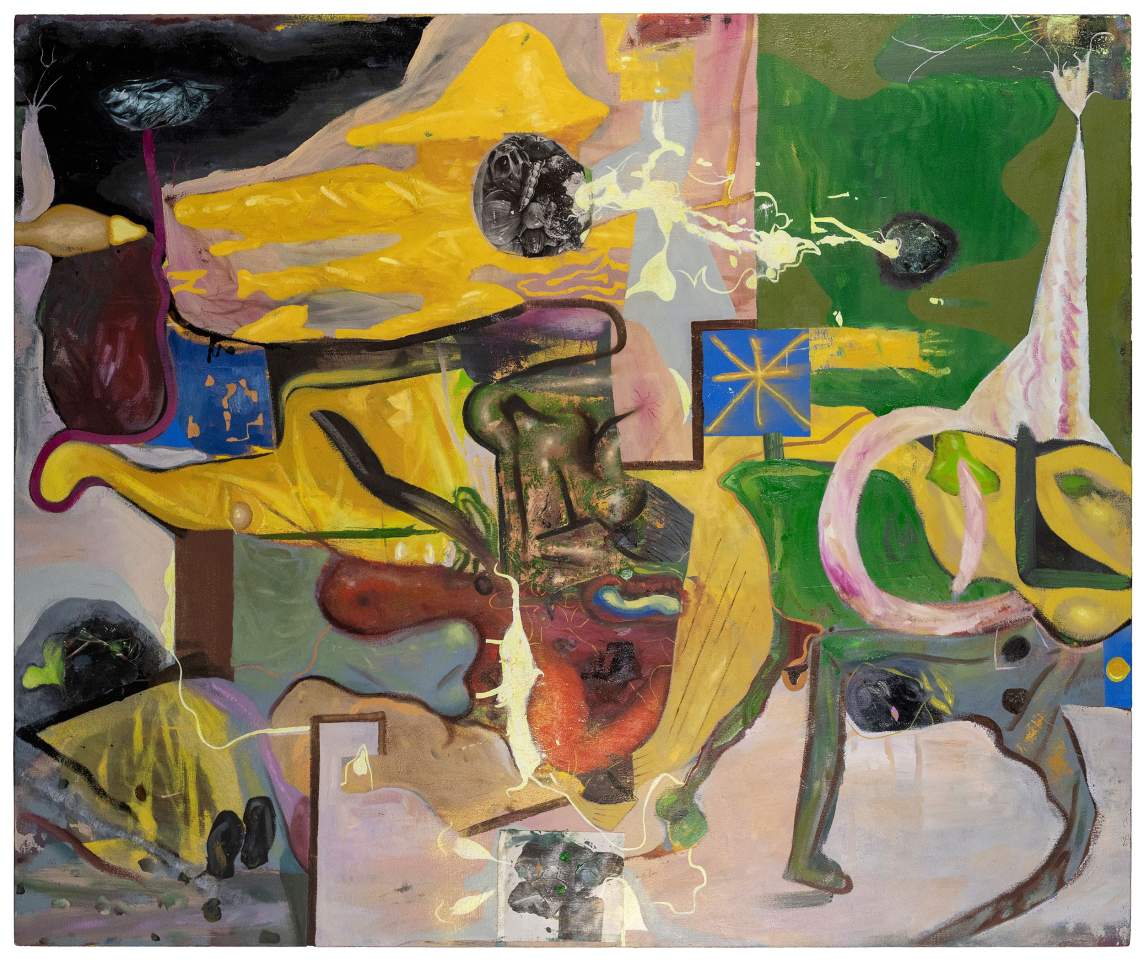
Paintings are scrims through which to view the world. They present interiority and exteriority simultaneously. My paintings have subject matter, but I’m only interested in representation in so far as how it manufactures a sense of knowing in a picture—a knowing that will inevitably mutate into ambiguity.
To give an example, with my painting Sauna Stones (2023), I was thinking about my Scandinavian ancestry through the pop-signifier of saunas. That led to thinking about catalytic objects—things that are small, able to be manipulated by hand, and have the power to affect the environment on a larger scale.
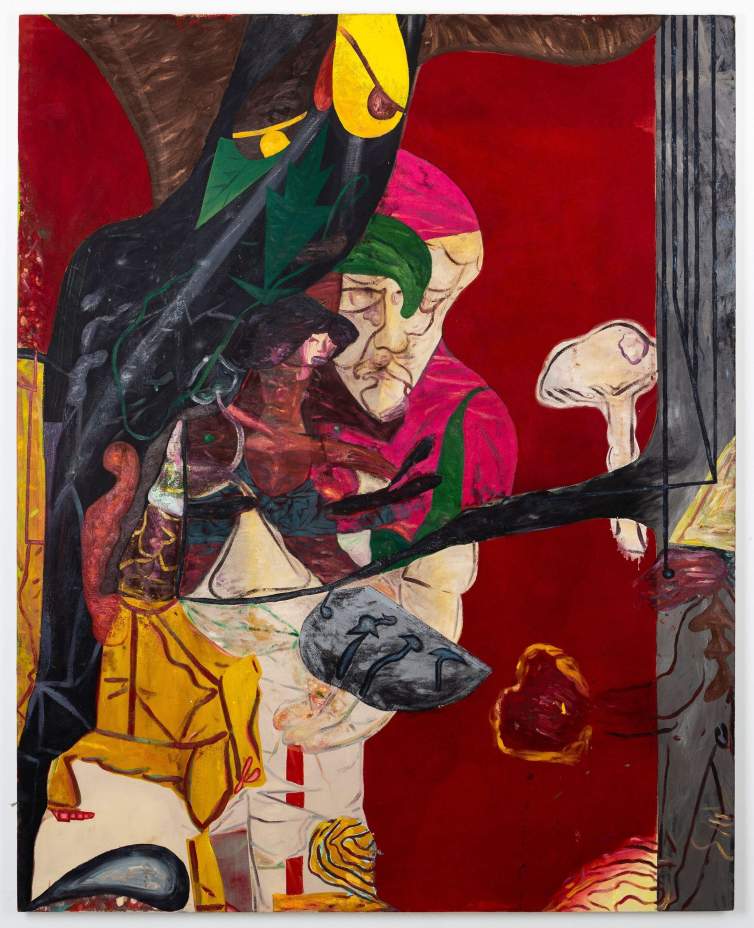
Another work, Small and Large Swimmers with Mushrooms (2019), has a dead-pan title that bluntly describes compositional elements, although the images, forms, or passages emerge obliquely.
With the painting Tables and Chairs (2020), I was thinking about the act of masquerading as something else in order to be considered useful. And failing of course. For me, painting is always about failing in some way—like being a child and thinking can make yourself invisible by covering your eyes.
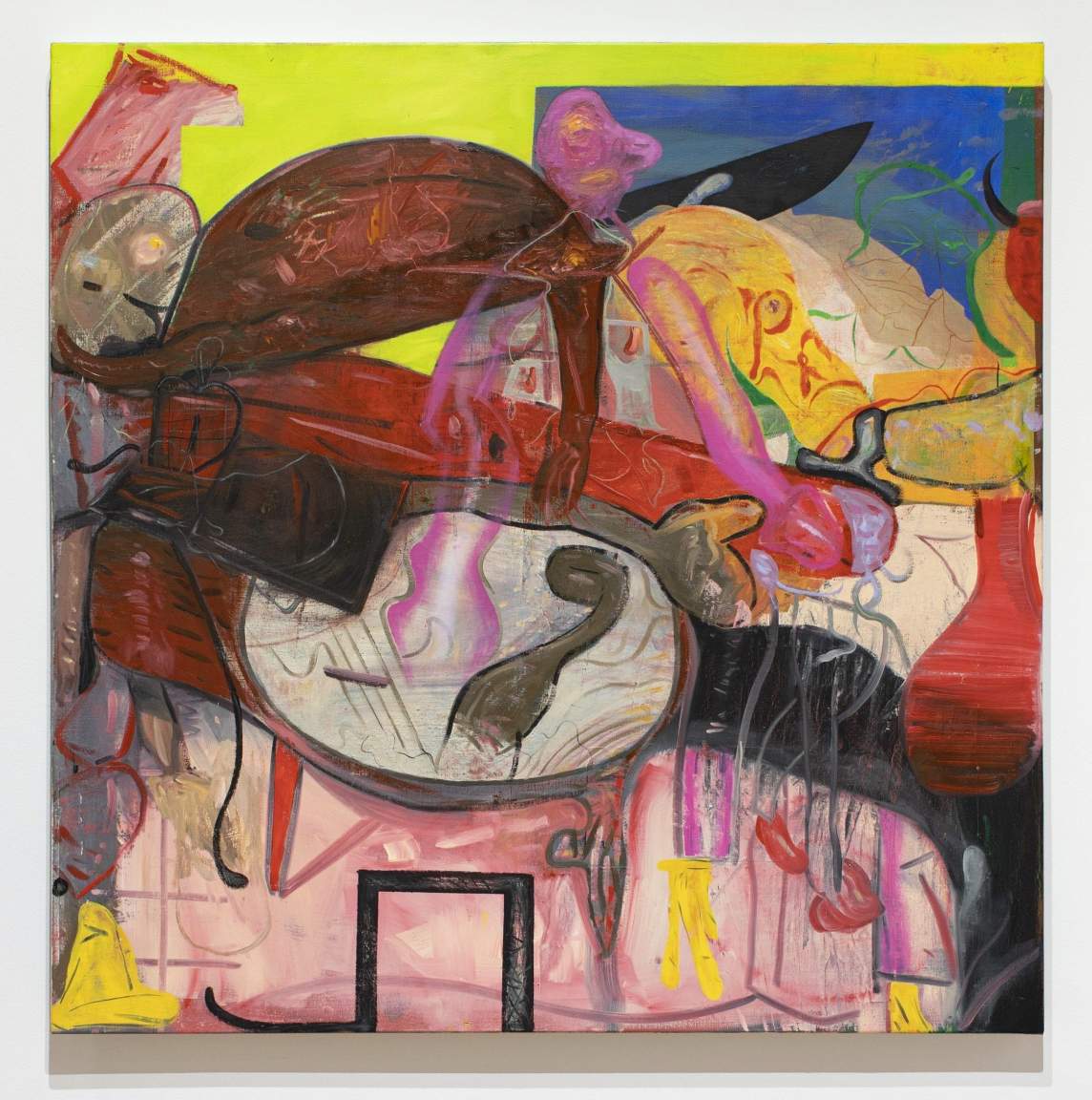
I want the things that I make to require active looking and physical proximity in order to be able to describe them, and I want them to resist an ability to remember them in a way. I mean, you can't necessarily shake the ability to recall things in total, but memory should be a very unreliable tool for understanding what it means to experience the work.
Experiences that are direct and primary seem to be more rare as so much about life is heavily mediated, synthesized, and rehashed, including a lot of art. I want the work that I make to incentivize being with it and returning to it, which I guess means I want the work to be imbued with a sort of pathos. An object analogy might be an heirloom instead of a monument. Worn and weird and mostly useless outside of those who hold it dear.
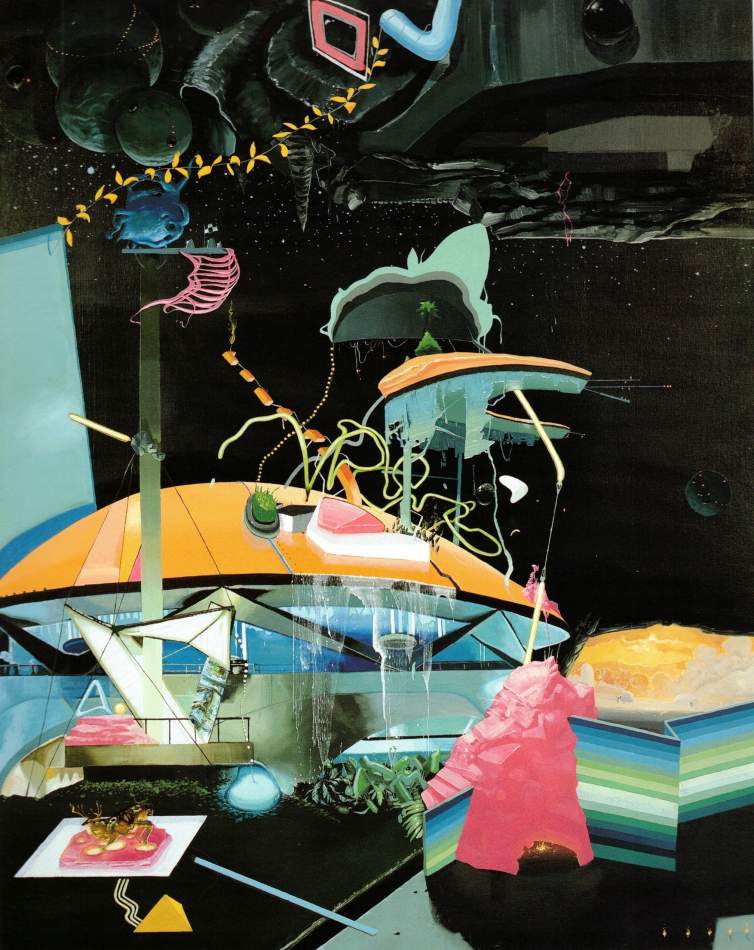
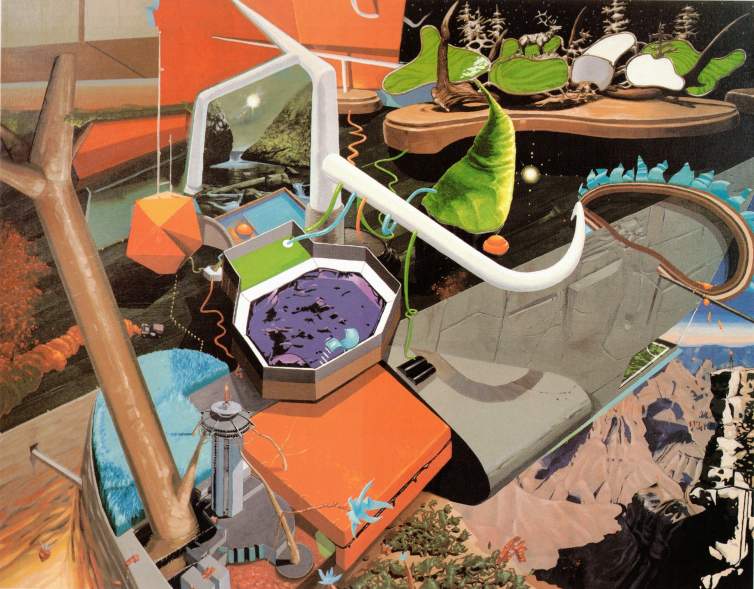
Recently, I've been thinking a lot about the work I was making right out of school, a little over 20 years ago, that were these artifacts of reflective nostalgia to my formative years when I was obsessed with things like utopias, retro-futurism, fantasy, and myth. I've always been drawn to obsolete or far-fetched explanations about the world of the past or future—landscapes of the afterlife, extraterrestrial worlds, alchemy, creation myths, spontaneous generation, and other dead pseudo-sciences, cryptozoology, etc.
I used to think about things I made more in spatial terms (usually as in depictions of spaces more than fabricating spaces themselves, but who knows how that translates to future work in the studio) such as landscapes, and interiors, and that's where my mind has been going lately. I don't know what this means for the work yet, but I'm looking forward to figuring it out.
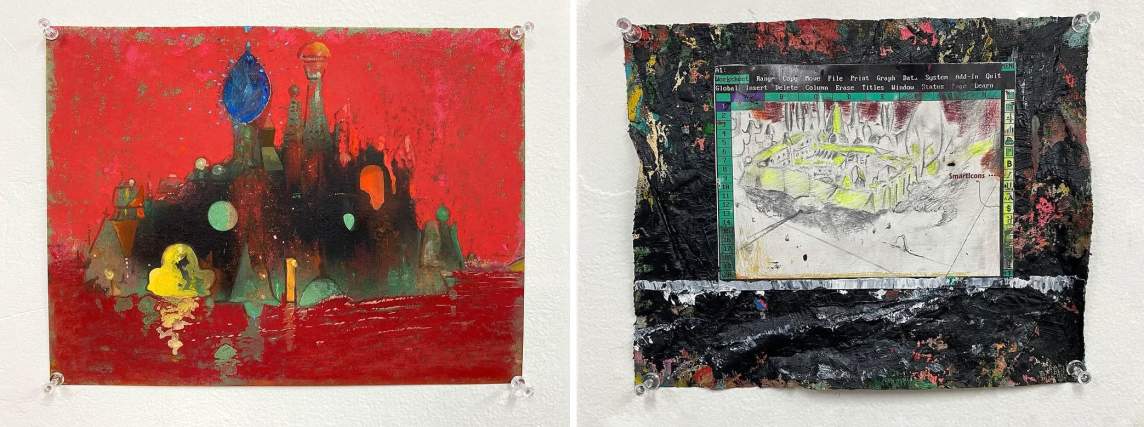
Right now in the studio, I'm making arrangements for a one-person exhibition at the Marianna Kistler Beach Museum of Art at Kansas State University for the spring of 2027. Kansas State is where I went to college, so this is very meaningful to me. The plans for this are very much still in the development stage, so I don't know yet what exactly I'll be doing for the show. I'm hoping I get a chance to collaborate with the Art Department there in some way too, but we'll see.
Otherwise, I'm excited about the ability to explore some new ideas, methods, and materials that the Joan Mitchell Fellowship affords me. It's counterproductive to try and explain what those might be before I've had a chance to fully vet the notions in my mind and through making. A lot of love and discord in the studio right now, though, so all is going to plan.
Interview and editing by Jenny Gill. Learn more about Scott Anderson’s work on Instagram.